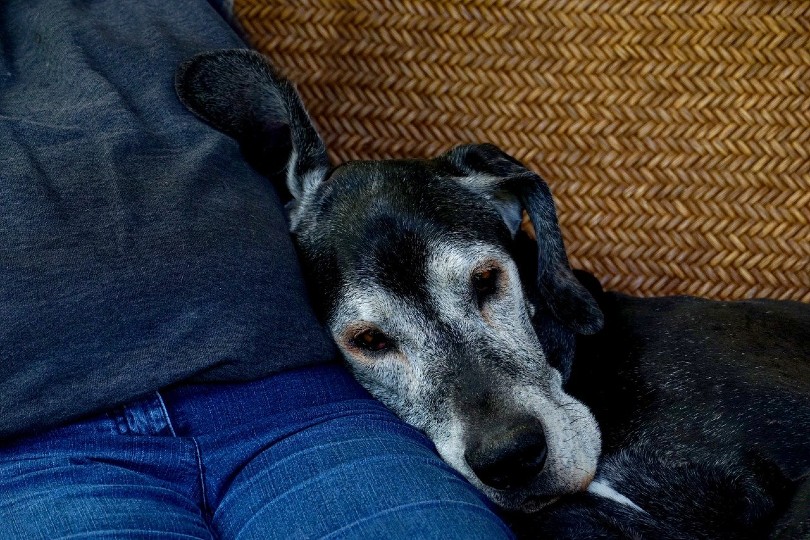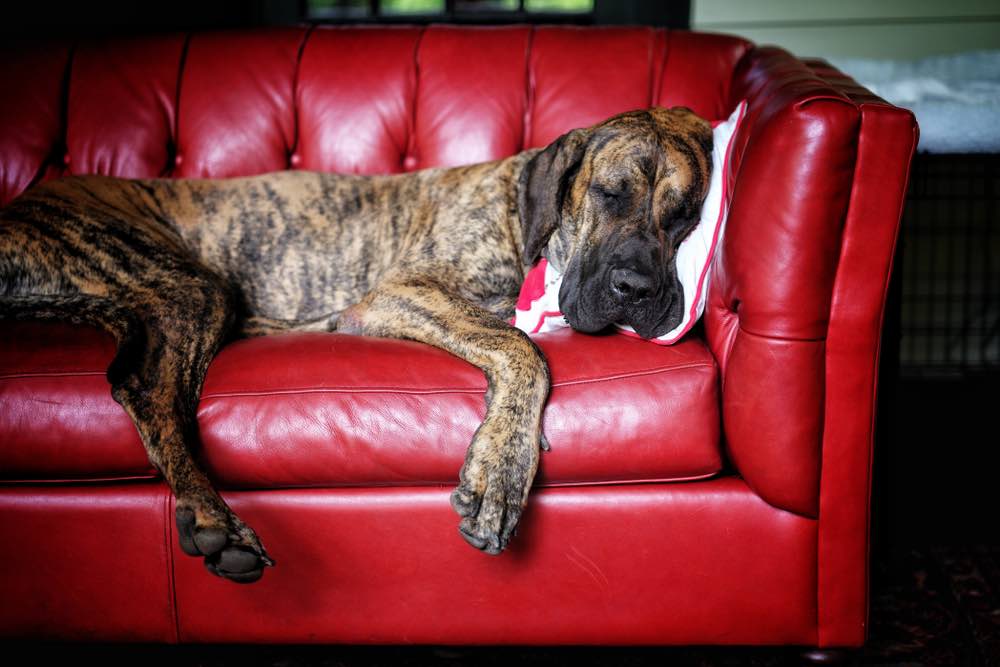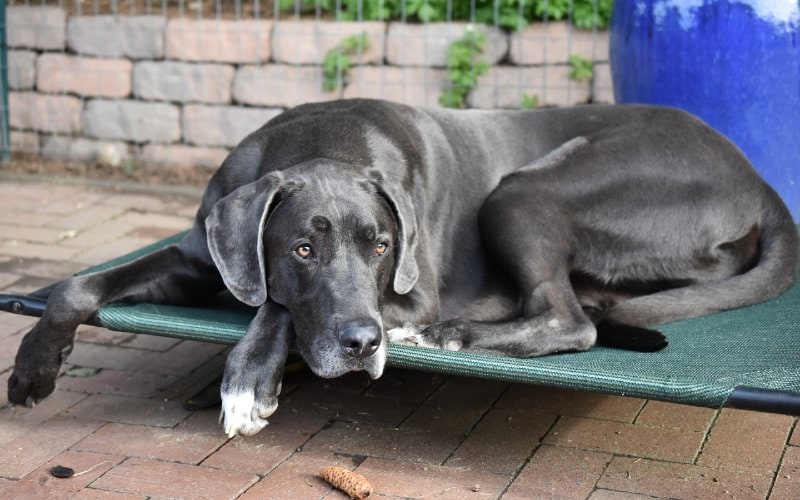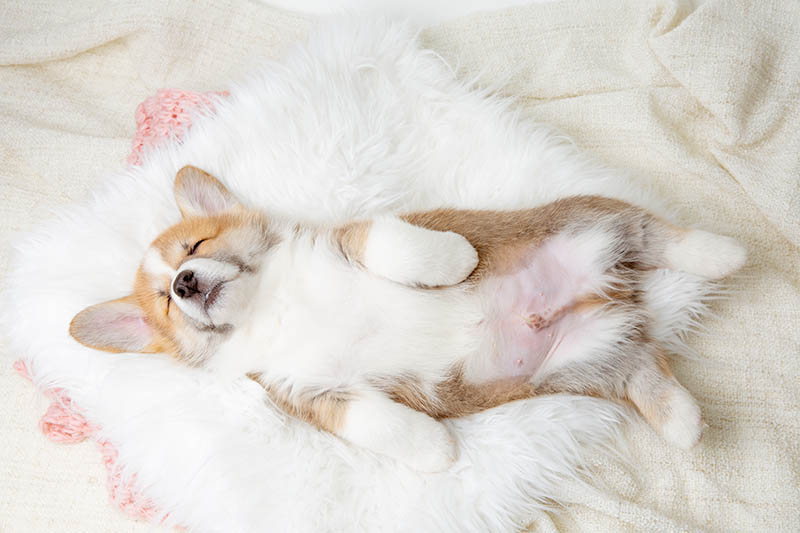Why Does My Great Dane Lean on Me? Behaviour Explained
Updated on

Leaning is very common in bigger dogs. Smaller dogs are often too small to lean against their much-bigger humans. However, bigger dogs are tall enough to reach our waists, making leaning much more practical. Often, Great Danes lean when they want attention—it’s similar to how a feline may rub up against its owner’s legs.
However, while this leaning is meant to be loving, Great Danes are extremely large and this leaning can be a bit troublesome. It can knock people over, especially if the dog does it forcefully. Therefore, it may be a good idea to train the dog to do something else when they want attention. Sitting is a standard option, for instance.
Having a Great Dane sit when they want attention instead of leaning can be much more manageable.
Still, not everyone chooses to train this behavior away. Some dogs are gentler about it than others and their leaning may be less than an issue.
Potential Reasons for Leaning in Great Danes
Your Great Dane may lean for other reasons, as well. For instance, your canine may be trying to stay warm. These dogs don’t have much fur, so they can easily become cold. If your dog is outside on a chilly day (or you haven’t turned the heat on), they may seek you out for your body heat. Leaning against you may be one of the most accessible ways for them to stay warm.
If your dog is shivering and otherwise cold, you may want to buy a jacket for them. While clothes are usually not recommended for dogs, they may be necessary for a Great Dane in cold areas. We highly recommend that Great Dane owners stay looking for signs that their canine is too cold.
Some Great Danes lean when they are scared. While these dogs are quite large, they can easily become fearful in some instances. A lack of socialization can lead to excess fear. For instance, when dogs are not shown many different (potentially scary objects) when they are puppies, they may become fearful later on.
However, even with correct socialization, Great Danes can sometimes be fearful. Most smaller dogs would hide or run when scared but Great Danes are so large that this isn’t always possible. Therefore, they may lean up against you instead.
Sometimes, Great Danes may also become tired. They may be tired of standing and decide to lean up against you instead. In this case, we recommend getting your dog somewhere to rest. Great Danes have pretty amazing stamina but can get tired after plenty of physical exercise.
(Just like people, Great Danes need regular exercise to keep their stamina up. If you suddenly start their exercise routine up after a long lull, they can easily become tired.)

Do Great Danes Lean to Exert Dominance?
It’s a common misconception that dogs like Great Danes will try to exert their dominance. One look at the internet reveals several ways people claim dogs do this. From eye contact to physical “overpowering,” almost any dog behavior is listed as a potential “dominance” behavior.
However, the truth is that most dogs don’t show dominance that way. The original theory around canine dominance arose from a study on wolf behavior. However, this study was done in captivity where wolves are in strange circumstances. Later, the study was disputed by the same man who originally did the study.
Therefore, much of the common knowledge surrounding wolf behavior is untrue but many people still drew from the study to explain dog behavior. Of course, this is troublesome because the original wolf study has been disputed. Behaviors also aren’t easily transferred from wolves to dogs—they may be related, but they’re completely different animals.
It’s a bit like using human behavior to explain baboon behavior. You might happen to get it right sometimes, but behaviors don’t transfer that easily.
In some cases, dogs may exhibit dominance-like behavior with other dogs (like when living as a stray). However, our dogs aren’t stupid—we aren’t dogs, and our Great Danes know it. Great Danes are not sitting around thinking about how they can become the dominant dog. There is now a large movement centered around debunking the alpha dog theory and changing training techniques to match how dogs work.
Therefore, if your Great Dane is leaning on you, it is not because it is trying to exert its dominance. Instead, they’re likely looking for attention, cold, or tired.
Is Great Dane Leaning Bad?
If you’re reading this article, you may be worried that your Great Dane is showing some troublesome behavior. However, leaning isn’t necessarily bad. You don’t want your dog leaning so hard that they knock people over. In this case, positive reinforcement training may be necessary to encourage a different behavior. However, beyond that, leaning usually isn’t bad.
You may want to consider that it may be a sign of an unmet need. For instance, your dog may lean if it is cold or tired. In this case, fixing their dysfunction is recommended. More rarely, leaning may signify fear or an underlying behavioral problem. Therefore, we highly recommend looking for the underlying cause of the leaning behavior.
Most of the time, this behavior is just attention-seeking, which isn’t necessarily bad. If your dog leans too forcefully or is particularly large, you can train them to sit instead.

Conclusion
Lots of larger dogs lean, including Great Danes. Usually, dogs do this when they want attention. Larger dogs may lean like a cat may rub up against you. In most cases, this isn’t a huge issue nor a sign of an underlying problem. There are some misconceptions out there regarding dominant behaviors exhibited by Great Danes. However, this theory is unfounded.
Sometimes, leaning can indicate something a bit more troublesome. For instance, the canine may be tired or fearful. In these instances, you may want to remove the dog from the situation until they become more comfortable.
Featured Image Credit: Schwoaze, Pixabay













